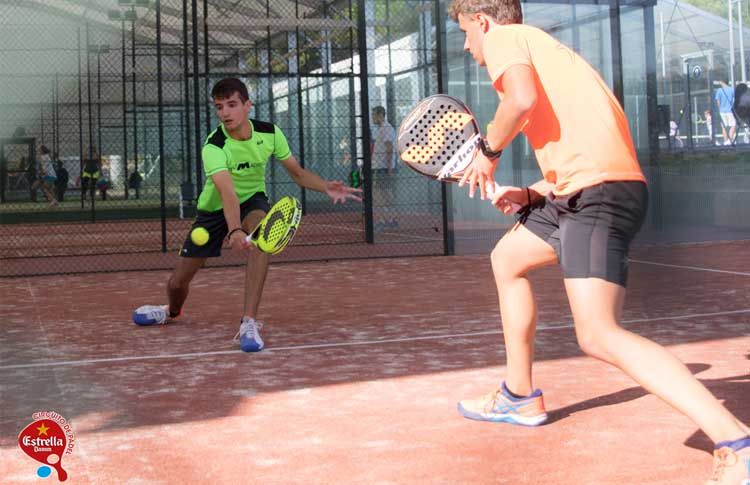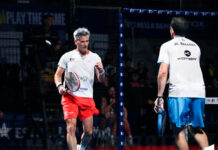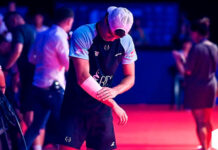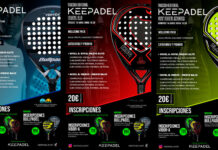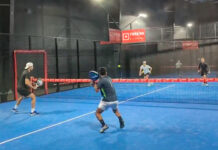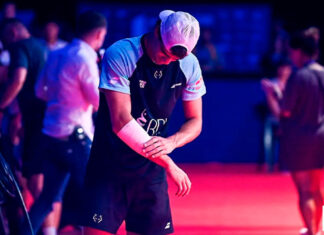Padel World Press .- Do not miss this great article, in which Nito Brea, a restless, analytical coach with a great teaching vocation, once again shared his concepts, his methodology and his experiences with the fans. On this occasion, he told us about the importance of anticipation in the paddle.
Enjoy it!!
"Certain players look like magicians when, from outside the court, one always sees them standing well and reaching incredible balls without spectacular movements. Beyond that it would be more interesting to believe in magic, this almost supernatural fact has an explanation: anticipation. Knowing how to read the opponent's play can save steps and air.
Next, I leave you with a small manual on the mystical subject of divination.
Many times they will have heard about the anticipation of the play or will see players who, without being very fast in their movements, are always well on the court and it seems that the ball is the one who follows them and not them to the ball.
This is because they have a good sense of anticipation of what the opponent can play. This reading of the play is important because it will give them the possibility to narrow down the place where the ball will come from, covering the spaces better and having greater definition possibilities.
The first thing to do is study the rival: left-handed or diestro, physical qualities, ability to recover ball, wrist or ability to lift low and complicated balls, etc. All this, combined with observing how the ball remains at the moment of impact, will give them the necessary information to anticipate what in theory and in most cases this will be able to play.
I will take as an example a right-handed player for the explanation, with which they should reverse the directions in the case that it was a left-handed person. The most basic thing is to see if the ball is left behind or in front and low or high prior to impact. If the drive is left behind, the ball will have a tendency to go directed to the right, that is, your left. If left ahead, the tendency will be to go to the left; or right of you who are facing the rival. This will give them the possibility to cover more that side. On the other hand if the ball is too low you can anticipate that it will cost a lot to play a balloon so you can stick more to the net and be in a more comfortable position to define or press more.
Other common plays and where there is an easy reading would be:
- Seeing that the opponent will play a counterpart, we can anticipate that a balloon will come, therefore if the ball was left for a comfortable counterpart to the opponent we should back down to be able to play a smash, and instead if we see that it will reach a very strong counterpart forced, can stick to the network to get the ball out of the court because it will surely come a short balloon that barely passes the network.
- When you are at the bottom and play a ball that hits the belt and the ball passes from the other side (almost dead), you must run forward since the opponent being so close to the net can only deliver the ball a little high so that you can define (in the case that they had climbed the net) or you can play a soft touch, so if they went up they will have the chance to reach that ball without any problem.
- If you are in the net and the opponent the ball is high for half of the court or to make a comfortable wall outlet, surely the ball will lower and have a better angle to do so they should stick a little more to the network (1.5 meters) of the normal (3 meters). In this case, they advance to reduce the field but it will be almost to stop the rival's sending, since he has all the possibilities of playing a good shot.
- If you play from the back of the court a short ball with the rivals in the net and know that they have power in the smash, they should start to go forward, (always close to the wire and back to it) to reach the ball that will surely give a lot of rebound.
Like these, there are many more situations, the important thing is that they are trying to read a little more what can come and for this I recommend this exercise:
When watching a game, follow a player at any point and try to anticipate where the ball will play just before it hits it. This will help you a lot to incorporate it for when you are playing. If they just have the chance to study in this way a player they have to face, they will feel that they can read almost all the hits and it will be like a movie they have already seen several times.
Nito Brea. "
Image: Paddle Circuit Estrella Damm
* You can follow all the news of the world of paddle in our profiles of Facebook y Twitter as well as subscribe to our Daily newsletter.
* You can follow all the news of the world of paddle in our profiles of Facebook y Twitter as well as subscribe to our Newsletter .

